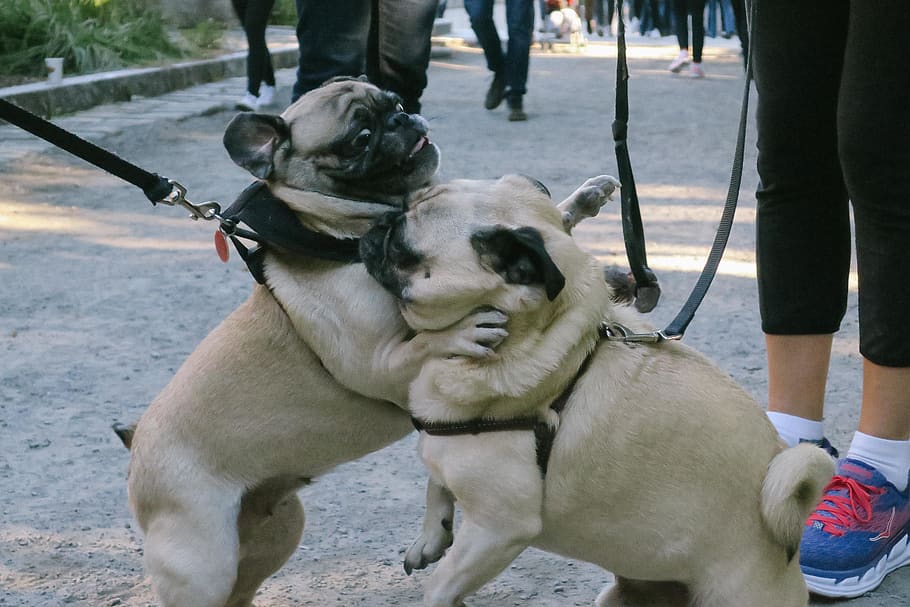What happens if a fight does break out with your Pug angels?
Do not attempt to separate the aggressive Pugs by grabbing them. I have never known a Pug baby to bite anyone, but it could happen.
Make a loud noise, spray them with water, or shake a plastic bag toward them to distract them
You don’t need much to distract Pugs dogs. Usually, I can get away with just shaking my water bottle near my Pugs, and they stop immediately. They shake as if they’re wet from water, although there was not a drop of water. Overall, they are lovers, not aggressive fighters, so something like this should break them up. If more is needed, grab a baby gate or broom and put it between them.
Make sure your loud noise is not you yelling. Your excitement can add to their excitement, escalating the entire situation, and make them more aggressive. The loud noise could be an air horn, door slam, or hitting a spoon on a pan lid.
Generally, one loud, startling noise. Not a lot of yelling that is stimulating. I generally knock on the door or wall as if somone is coming over. They stop and look at the door.
Once separated, put your Pug dogs in separate rooms. Wait until everyone’s heartbeat (including yours) has gone back to the normal baseline.

